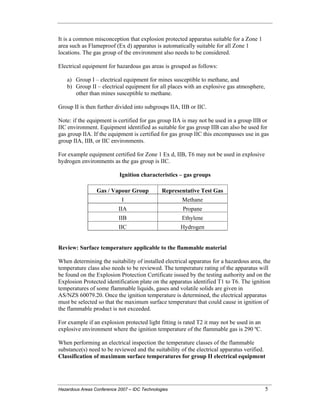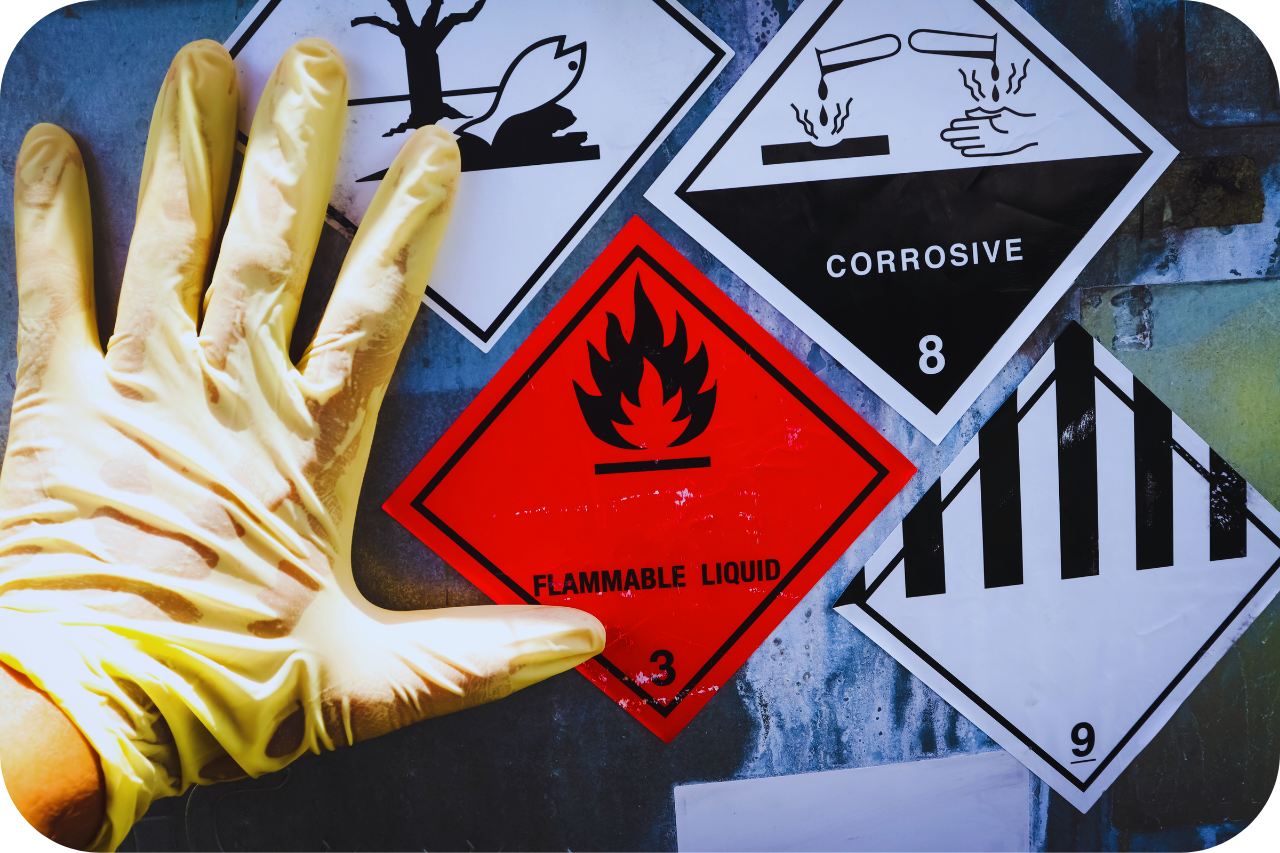Roar Solutions Fundamentals Explained
Roar Solutions Fundamentals Explained
Blog Article
Everything about Roar Solutions
Table of Contents9 Easy Facts About Roar Solutions ExplainedThe smart Trick of Roar Solutions That Nobody is Talking AboutThe Roar Solutions Ideas
In such an environment a fire or explosion is possible when 3 fundamental problems are fulfilled. This is usually described as the "unsafe location" or "burning" triangular. In order to secure setups from a prospective explosion a method of evaluating and identifying a possibly unsafe location is needed. The objective of this is to ensure the appropriate choice and setup of tools to inevitably avoid an explosion and to make certain security of life.
(https://papaly.com/categories/share?id=f67ddeb126ff42bfb724a48f0cebd961)
No equipment should be set up where the surface area temperature of the equipment is more than the ignition temperature level of the provided danger. Below are some usual dirt harmful and their minimum ignition temperature. Coal Dirt 380C 225C Polythene 420C (melts) Methyl Cellulose 420C 320C Starch 460C 435C Flour 490C 340C Sugar 490C 460C Grain Dust 510C 300C Phenolic Resin 530C > 450C Aluminium 590C > 450C PVC 700C > 450C Soot 810C 570C The probability of the threat existing in a concentration high enough to create an ignition will vary from area to location.
In order to identify this danger an installation is separated into locations of threat relying on the amount of time the harmful is existing. These areas are referred to as Areas. For gases and vapours and dusts and fibres there are 3 areas. Zone 0 Zone 20 A harmful ambience is very likely to be present and might exist for lengthy durations of time (> 1000 hours per year) or even continually Zone 1 Area 21 A hazardous environment is possible but unlikely to be existing for extended periods of time (> 10 450 C [842 F] A classification of T6 indicates the minimal ignition temperature is > 85 C [185 F] Hazardous location electrical equipment possibly made for usage in higher ambient temperature levels. This would certainly suggested on the rating plate e.g. EExe II C T3 Ta + 60C( This suggests at 60C ambient T3 will not be exceeded) T1 T1, T2, T3, T4, T5, T6 T2 T2, T3, T4, T5, T6 T3 T3, T4, T5, T6 T4 T4, T5, T6 T5 T5, T6 T6 T6 A T Course score of T1 implies the maximum surface area temperature level produced by the instrument at 40 C is 450 C. Thinking the connected T Class and Temperature rating for the equipment are proper for the location, you can always make use of a tool with a much more rigid Department score than required for the location. There isn't a clear response to this inquiry. It really does depend on the type of tools and what repair services require to be executed. Devices with certain test procedures that can not be performed in the field in order to achieve/maintain 3rd party score. Must come back to the factory if it is prior to the equipment's service. Field Fixing By Authorised Worker: Complicated screening might not be required nevertheless certain treatments might need to be complied with in order for the devices to maintain its 3rd party score. Authorised workers must be used to execute the work correctly Repair service have to be a like for like substitute. New part should be thought about as a direct replacement needing no unique testing of the devices after the fixing is full. Each piece of tools with a dangerous score must be examined individually. These are laid out at a high degree below, but also for even more thorough info, please refer directly to the guidelines.
The 7-Second Trick For Roar Solutions
The devices register is an extensive database of tools documents that includes a minimum collection of fields to determine each item's location, technical parameters, Ex lover category, age, and ecological data. This info is vital for tracking and taking care of the equipment successfully within hazardous areas. On the other hand, for regular or RBI tasting assessments, the quality will be a mix of Detailed and Close assessments. The proportion of In-depth to Shut evaluations will certainly be figured out by the Equipment Danger, which is examined based on ignition risk (the chance of a source of ignition versus the chance of a combustible environment )and the dangerous area classification
( Area 0, 1, or 2). This variant will certainly also influence the resourcing demands for job preparation. When Whole lots are defined, you can create tasting strategies based upon the example size of each Lot, which describes the variety of arbitrary devices items to be examined. To identify the called for sample size, two aspects need to be examined: the dimension of the Whole lot and the group of assessment, which shows the degree of initiative that need to be applied( decreased, typical, or raised )to the inspection of the Great deal. By incorporating the classification of inspection with the Great deal size, you can then develop the proper being rejected criteria for a sample, implying the permitted number of damaged products discovered within that example. For more details on this process, please describe the Power Institute Guidelines. The IEC 60079 typical advises that the maximum interval between examinations must not exceed 3 years. EEHA assessments will also be conducted beyond RBI campaigns as part of arranged maintenance and tools overhauls or repairs. These examinations can be attributed toward the RBI example dimensions within the impacted Great deals. EEHA examinations are conducted to determine faults in electrical equipment. A weighted scoring system is essential, as a single piece of tools may have numerous faults, each with varying degrees of ignition danger. If the consolidated rating of both examinations is much less than twice the mistake rating, the Lot is regarded acceptable. If the Great deal is still thought about unacceptable, it should undergo a full examination or validation, which might trigger stricter inspection procedures. Accepted Whole lot: The root causes of any type of mistakes are determined. If a typical failing mode is discovered, extra devices might require maintenance. Mistakes are classified by intensity( Safety and security, Stability, Home cleaning ), guaranteeing that immediate concerns are evaluated and resolved quickly to alleviate any kind of effect on safety or procedures. The EEHA database need to track and tape the lifecycle of faults along with the corrective actions taken. Executing a robust Risk-Based Assessment( RBI )approach is essential for making sure conformity and safety and security in managing Electrical Devices in Hazardous Locations( EEHA) (hazardous area electrical course). Automated Fault Scoring and Lifecycle Administration: Effortlessly handle mistakes and track their lifecycle to enhance inspection precision. The introduction of this assistance for risk-based examination further reinforces Inspectivity's placement as a best-in-class remedy for governing conformity, in addition to for any asset-centric evaluation use case. If you have an interest in discovering more, we welcome you to ask for a presentation and uncover exactly how our option can transform your EEHA administration processes.
All about Roar Solutions

In terms of eruptive danger, a harmful area is an environment in which an eruptive ambience is existing (or may be expected to be existing) in quantities that need special preventative measures for the building, installation and use devices. Roar Training Solutions. In this article we discover the difficulties faced in the office, the danger control measures, and the required expertises to function safely
It issues of modern-day life that we manufacture, save or take care of a range of gases or liquids that are deemed combustible, and a series of dirts that are considered flammable. These materials can, in certain conditions, form eruptive atmospheres and these can have major and awful consequences. The majority of us know with the fire triangle eliminate any kind of one of the three components and the fire can not occur, yet what does this mean in the context of dangerous areas? When damaging this down right into its easiest terms it is essentially: a combination of a specific view it amount of launch or leak of a specific compound or material, mixing with ambient oxygen, and the presence of a source of ignition.
In a lot of instances, we can do little regarding the degrees of oxygen in the air, yet we can have significant impact on sources of ignition, as an example electric tools. Unsafe locations are recorded on the unsafe area classification drawing and are identified on-site by the triangular "EX" indication. Right here, among various other crucial details, areas are divided right into 3 kinds relying on the hazard, the chance and period that an eruptive ambience will exist; Area 0 or 20 is regarded the most harmful and Zone 2 or 22 is deemed the least.
Report this page